
Polymeric soft-biomaterials have significant impact in the aged society. Biocompatible and biodegradable polymers have emerged during the past decades to promise extraordinary breakthroughs in a wide range of diagnostic and therapeutic medical devices. Understanding and controlling the interfacial interactions of the polymeric soft-biomaterials with biological elements, such as water, ions, proteins, bacteria, fungai, and cells are of essential towards their successful implementation in biomedical applications.
In order to understand the underlying mechanisms for the biocompatibility of polymers at the molecular level, we have proposed the “Intermediate Water” concept. The intermediate water behaves differently from bulk water and acts as a physical barrier against protein adsorption and platelet adhesion. The objective of the research is to design of the multi-functional biomedical polymers by controlling bio-interfacial water structure through precision polymer synthesis.
In biomedical applications, there are continuous efforts to enhance methods, materials, and devices. The recent development of novel biomaterials and their applications to biomedical problems have dramatically improved the treatment of many diseases and injuries. Although a various types of materials in biomedicine have been used widely, most biomaterials lack the desired functional properties to interface with biological systems and have not been engineered for optimum performance. Therefore, there is an increasing demand to develop novel materials to address such problems in biomedicine arena. There are numerous parameters of polymeric biomaterials that can be affected the cellular behavior in a controlled manner. The underlying mechanisms for the biocompatibility of polymers at the molecular level are complex and have not been clearly demonstrated, although many theoretical and experimental efforts have been made to understand these mechanisms. Water and proteins interactions have been recognized as fundamental for the biological response to contact with polymers. We have proposed the “Intermediate Water” concept; the water exhibited clearly defined peaks for cold crystallization in the differential scanning calorimetry (DSC) chart, a strong peak at 3400 cm-1 in a time-resolved Infrared (IR) spectrum and higher mobility of water in a 2H-NMR. The intermediate water was only found in hydrated biopolymers (proteins, polysaccharides and nucleic acid; DNA and RNA) as well as hydrated biocompatible synthetic polymers. The intermediate water behaves differently from bulk water and acts as a physical barrier against protein adsorption and platelet adhesion. We hypothesized that intermediate water, which prevents the proteins and blood cells from directly contacting the polymer surface, plays an important role in the biocompatibility of polymers. Here, we highlight recent developments of biocompatible polymeric biomaterials for medical devices as well as tissue engineering and overview of the recent progress of the design of the multi-functional biomedical polymers by controlling bio-interfacial water structure through precision polymer synthesis.

Keywords:Cell adhesion; Protein adsorption; Water structure; Polymer synthesis; Medical devices.

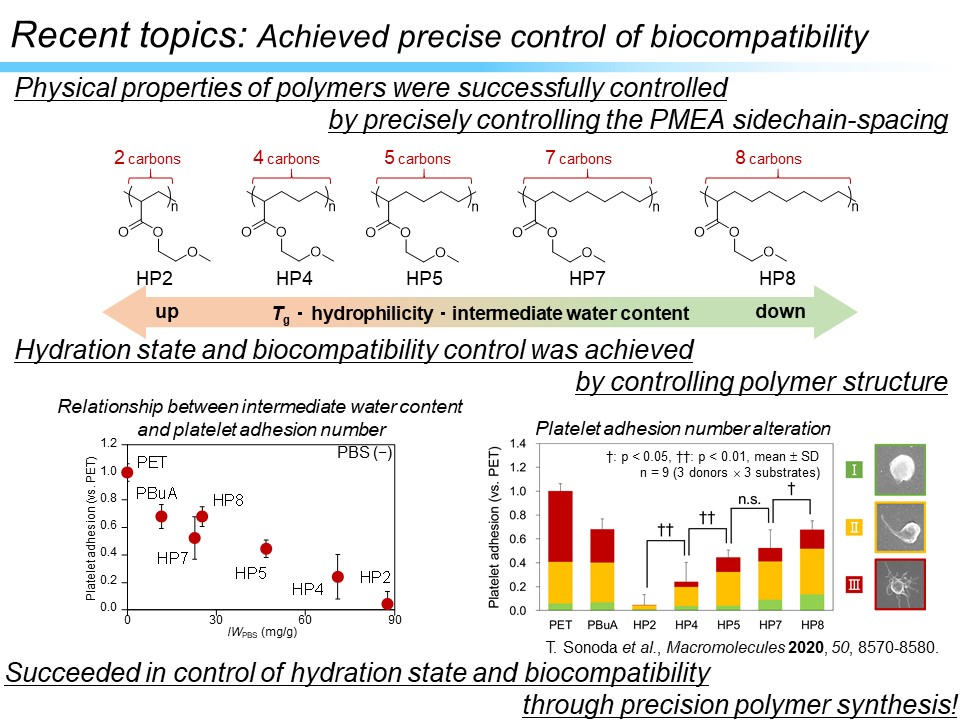
Our human body is a biopolymer complex composed of polymers, e.g., proteins, nucleic acids, and polysaccharides. The extremely high functionality of enzymes, for example, is achieved by the expression of higher-order structures based on precisely controlled amino acid sequences and the control of specific/non-specific intra/inter molecular interactions.
Similarly, the physical properties and biocompatibility of synthetic polymers also strongly reflect the characteristics of their chemical structures. In our group, we synthesize polymers with well-defined structures using various organic chemistry techniques that can precisely control the chemical structure of polymers; and conduct research to understand the relationship between chemical structure, physical properties, hydration state, and biocompatibility. Our ultimate goal is to contribute to human health by developing better biocompatible materials through organic chemistry approaches to the design and control of polymer structures.
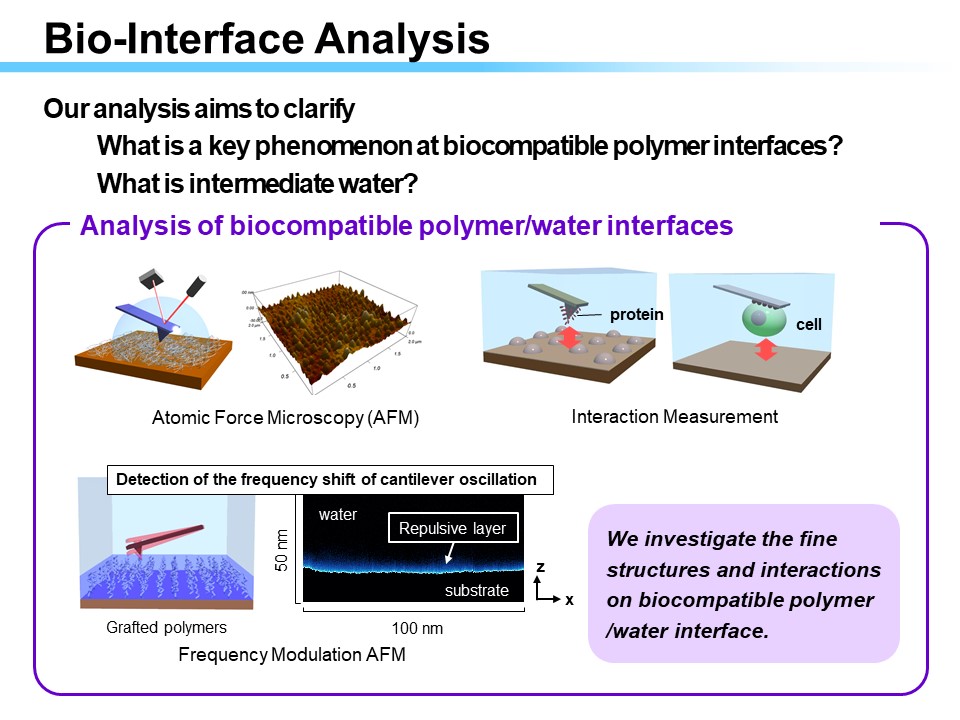
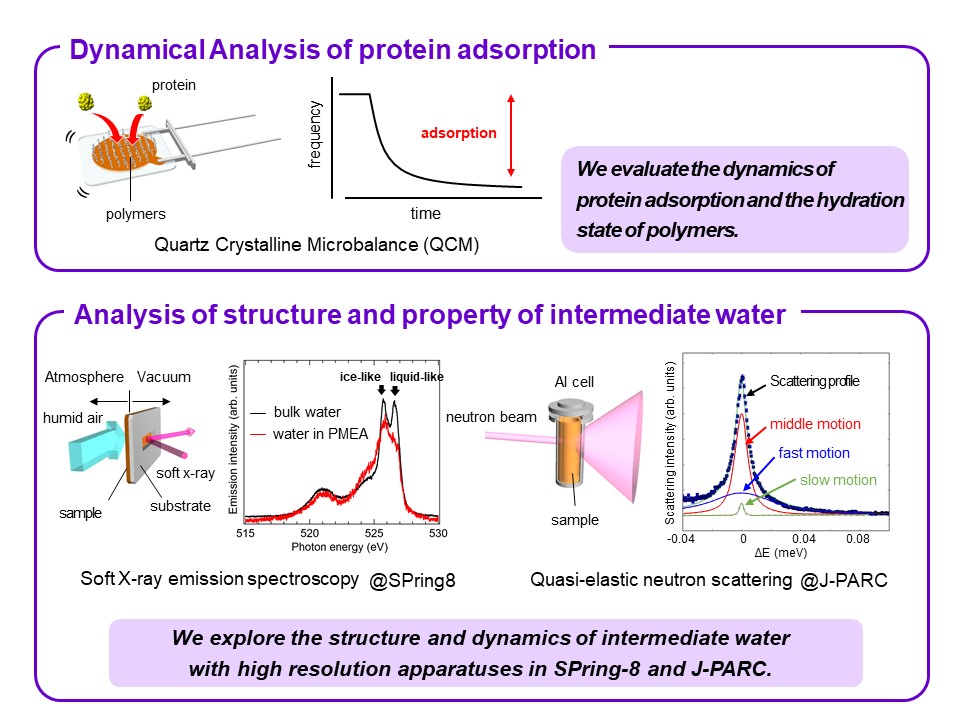
We investigate the structures, interactions, adsorption dynamics, etc. on biocompatible polymer interfaces, to examine “What is a key phenomenon to determine functions of biocompatible polymer?”. And we aim to clarify “What is intermediate water?” using high resolution measurements in SPring-8 and J-PARC.
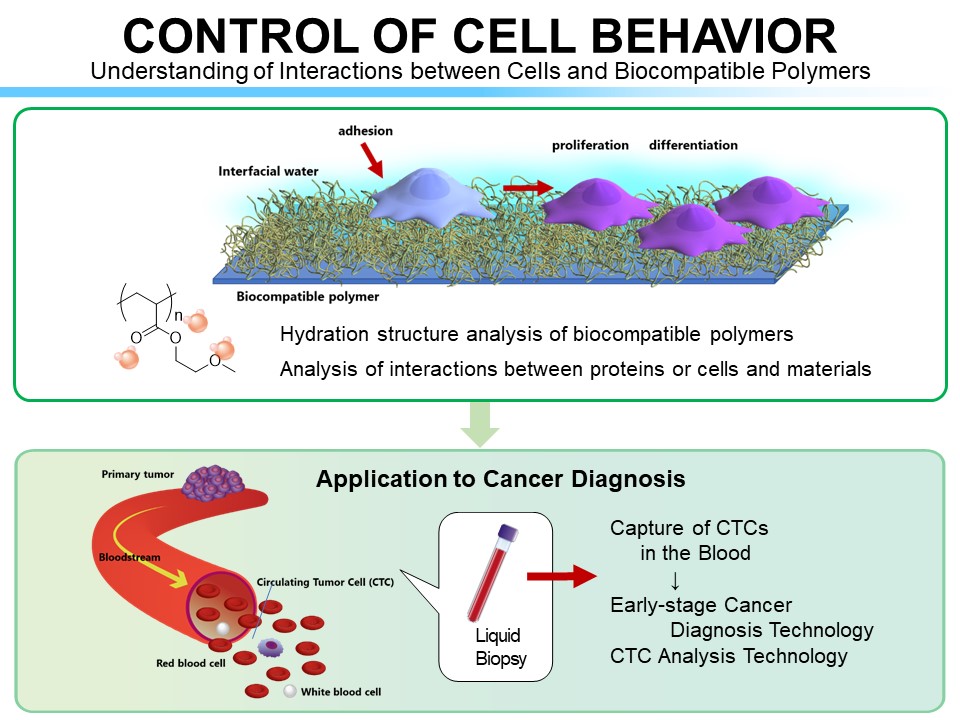
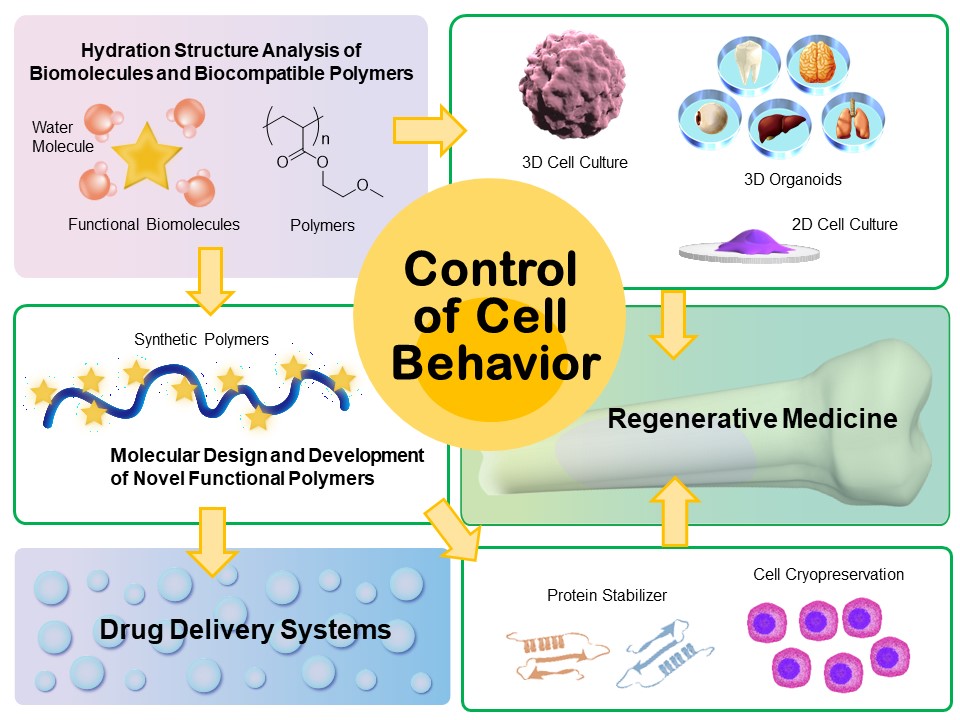
One of our goals is to clarify what the role of water molecules bound to biomolecules is. Based on our knowledge and results, we are designing and developing novel functional polymers which surpass molecules found in nature. We are also focusing on the control of cell adhesion and cell behavior by controlling the interaction between cells and biocompatible polymers, with the aim of applying our findings to early cancer diagnosis and regenerative medicine.
Challenges for Biomaterials Design and Applications to Accelerating Healthcare Innovation
Copyright© 2025
Masaru TANAKA LAB. All Right Reserved.
Produced by coanet